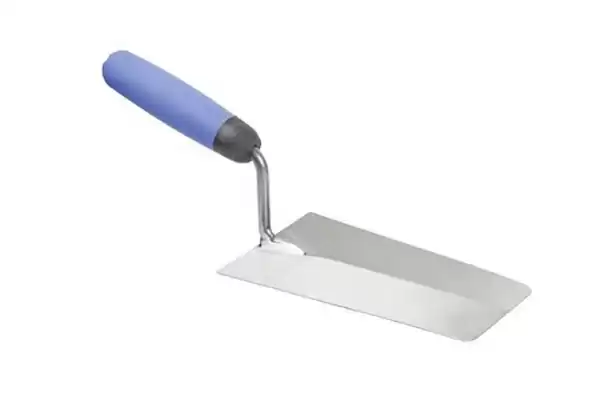In the world of construction and masonry, a variety of tools are essential for ensuring precision, efficiency, and quality in every project. Among these tools, the bucket trowel is a key player, often seen in the hands of masons, tilers, and bricklayers. Though it might not be as well-known as some other tools, the bucket trowel plays a crucial role in many aspects of construction work. This article explores what a bucket trowel is, its uses, and why it’s an indispensable tool for professionals in the industry.
Understanding the Bucket Trowel
A bucket trowel is a small, hand-held tool with a wide, flat blade and a sturdy handle. The blade is typically rectangular or trapezoidal and is slightly curved to aid in scooping and spreading materials. The size of the blade can vary, but it is generally around 5 to 7 inches in length. The handle is designed for a comfortable grip, allowing for precise control when using the tool.
Unlike other types of trowels, which are designed for spreading, smoothing, or finishing materials on surfaces, the bucket trowel is specifically designed for tasks that involve working within a container or bucket. Its unique shape and size make it ideal for handling and manipulating materials such as mortar, cement, plaster, or adhesive directly from a bucket.
Primary Uses of a Bucket Trowel
The primary function of a bucket trowel is to scoop, mix, and transfer materials from a container to a working surface. This makes it an essential tool in various construction and masonry tasks. Here are some of the most common applications of a bucket trowel:
1. Scooping and Mixing Mortar or Cement: One of the most common uses of a bucket trowel is in mixing and scooping mortar or cement from a mixing bucket. Masons and bricklayers often use this tool to mix the ingredients in a bucket thoroughly, ensuring an even consistency. Once mixed, the bucket trowel is then used to scoop out the mortar or cement and transfer it to a hawk, trowel, or directly onto the working surface.
2. Applying Adhesives and Plaster: Tilers and plasterers frequently use bucket trowels to handle adhesives and plaster. The wide, flat blade allows them to scoop the adhesive or plaster from a bucket and apply it to a trowel or directly to the surface being worked on. The tool’s design ensures that the material is handled cleanly and efficiently, reducing waste and mess.
3. Cleaning Out Buckets: After completing a task, cleaning up is an important part of maintaining tools and workspaces. A bucket trowel is often used to scrape the sides and bottom of buckets, removing any leftover material and making the cleanup process easier. This helps in maintaining the quality of the tools and prevents material from hardening and becoming difficult to remove later.
4. Precision Work: The bucket trowel is also useful for precision work, such as applying small amounts of mortar in tight spaces or corners. Its compact size and maneuverability make it ideal for tasks that require careful handling of materials in confined areas.
Why the Bucket Trowel is Essential
The bucket trowel’s design is what makes it an essential tool in construction. Its sturdy construction allows it to withstand the rigors of handling dense materials like mortar and cement, while its shape is specifically tailored for use within containers. This specialization allows workers to perform their tasks more efficiently, reducing the time and effort needed to prepare and apply materials.
Furthermore, the bucket trowel’s ability to facilitate clean and precise work is invaluable in maintaining the quality of the final product. Whether laying bricks, applying tiles, or finishing walls, the consistency and accuracy provided by a bucket trowel can make a significant difference in the outcome of a project.
Choosing the Right Bucket Trowel
When selecting a bucket trowel, there are a few factors to consider to ensure that it meets the needs of the specific task. The size of the blade is one of the most important considerations, as a larger blade may be more suitable for bigger jobs, while a smaller blade offers greater control for detailed work. The material of the blade is also crucial; high-quality steel blades offer durability and longevity, ensuring that the tool can handle repeated use without bending or breaking.
The handle design is another factor, as a comfortable, ergonomic grip can reduce hand fatigue during extended use. Some bucket trowels come with soft-grip handles, which provide additional comfort and control.
Conclusion
The bucket trowel, while often overlooked, is an indispensable tool in the arsenal of any construction professional. Its specialized design allows for efficient mixing, scooping, and transferring of materials directly from a bucket, making it an essential tool for tasks involving mortar, cement, plaster, and adhesives. Whether you’re a mason, tiler, or DIY enthusiast, understanding the value of a bucket trowel can enhance the quality and efficiency of your work, ensuring that your projects are completed to the highest standards.
Post time: Aug-14-2024







